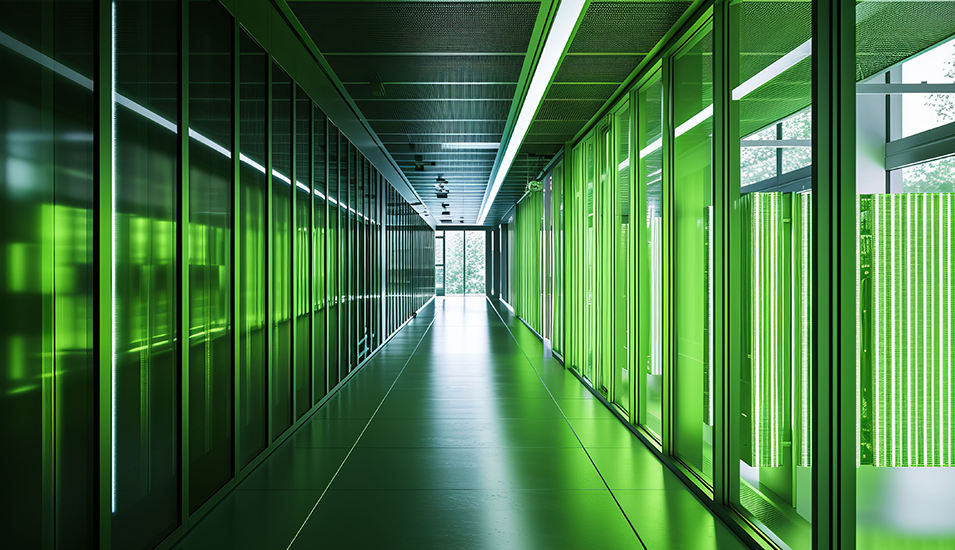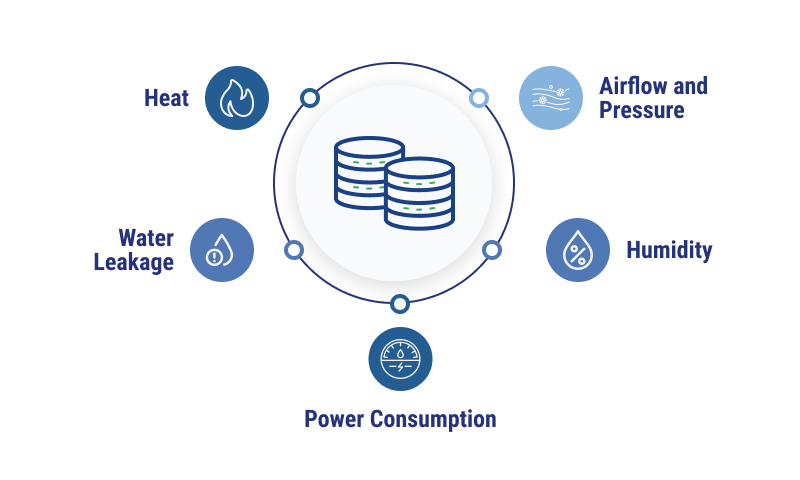June 14, 2024 | Channing Lovett
How to Approach Data Center Sustainability? Key Benefits & Tools

Most, if not all, businesses are doing what they can to become more sustainable; and for data centers, that’s easier said than done. On the one hand, the demand for data and computing power just keeps growing while on the other hand, running all those servers and cooling systems takes a massive amount of energy – so, there’s quite a tricky balancing act at play. However, implementing data center sustainability practices can help data center providers find a happy medium. Taking a data center sustainability approach focuses on finding smart ways to be more energy-efficient, optimize resources, and manage waste responsibly – without sacrificing the security and reliability that organizations need to keep things running smoothly.
What is Data Center Sustainability?
Data center sustainability encompasses different practices and approaches facilities can take to reduce the impact of data centers. When considering and implementing sustainable business practices, data centers also need to keep security and reliability concerns in the mix.
Why is Data Center Sustainability Important?
Data center sustainability is important for several reasons. Data centers consume a lot of energy every year, and this number is on the rise due to the demands from AI services. Overall data center consumption in the U.S. is expected to reach 35 Gigawatts by 2030, more than doubling since 2022. Focusing on sustainability at data centers can help reduce their environmental impact, save money, conserve resources, and position a business as more environmentally conscious. In some cases, it may be important to focus on sustainability for regulatory reasons as well.

Key Aspects of a Strong Data Center Sustainability Approach
Data sustainability can best be achieved through a multi-pronged approach of innovative optimizations and energy-efficient techniques.
Innovative Cooling Techniques
Liquid cooling offers a more efficient way to cool your equipment compared to traditional air cooling. Liquids are better conductors of heat, so they can absorb heat more effectively, similar to water pipes compared to fans. Liquid cooling can also bring coolant directly to the source of the heat, which may be components like processors or graphics cards. The more precise the delivery, the more effective the cooling, and the less energy is wasted.
Energy Efficiency
While data centers can optimize energy use via liquid cooling, they can also implement energy-efficient servers, renewable energy sources, and smart power management strategies to save even more.
Resource Optimization and Waste Reduction
Other methods of resource optimization and waste reduction can include:
- Consolidation of underutilized servers via virtualization technologies
- Regulating power usage of servers based on current workloads
- Separating hot air exhaust and cold air intake with a hot aisle/cold aisle containment strategy
- Optimizing storage using tiers, prioritizing faster storage for the most frequently accessed data
- Use heat from the data center to heat the buildings or provide hot water for the facility
- Managing e-waste for decommissioned equipment responsibly
Monitoring and Measurement
It’s easier to improve your sustainability when you have ongoing monitoring in the data center of:
- Power consumption
- Water usage
- Humidity
- Other environmental factors

Knowing which resources are being wasted (i.e. water due to a leakage), impacting or using the most energy can help you chart a course for future sustainability initiatives.
Data Center Design
Hot aisle/cold aisle containment is one design decision you may choose to make to improve sustainability via data center design. Adding natural ventilation, using energy-efficient building materials, and optimizing airflow in server racks can all contribute to a more sustainable data center.
Internal Culture of Sustainability
One way to ensure a data center will continue to become more sustainable is through fostering a culture of sustainability throughout the organization. This can include employee training, brainstorming on sustainability initiatives, and reiterating the shared responsibility at the business to lessen environmental impact.
How Do You Measure Data Center Sustainability?
More than one metric is necessary to get a clear view of data center sustainability.
Power usage effectiveness (PUE) is measured by dividing total facility energy consumption by IT equipment energy consumption. Lower PUEs, closer to 1, means the data center is more efficient.
Similar to PUE, carbon usage effectiveness (CUE) evaluates data center energy efficiency by measuring carbon emissions that are generated from one unit of IT energy. Water usage effectiveness (WUE) measures the efficiency of water used for cooling purposes.
Other metrics data centers might use include renewable energy use, a percentage of energy consumption coming from renewable sources, and material use, such as the responsible management of electronic waste from decommissioned equipment. The metrics a data center chooses to track may depend on the efficiencies they’re hoping to make.
Can AI Be Used to Help Improve Data Center Sustainability?
Artificial intelligence (AI) can be used to improve data center sustainability. How? By employing the right AI tools, businesses can work to reduce their data center footprint.
Real-Time Monitoring and Analysis
AI can amplify manual efforts by continuously monitoring sensor data for temperature, power consumption, and other environmental changes. This can help spot inefficiencies and address issues quicker.
Predictive Cooling and Power Management
AI can predict cooling needs and adjust cooling systems proactively by learning from historical patterns and combining that with real-time usage and outside sources such as weather forecasts. AI can also predict future power demands and change consumption based on how workloads normally fluctuate.
Proactive Maintenance
Equipment that needs minor maintenance is much better than equipment that needs an overhaul. AI tools can take sensor data on equipment to predict potential equipment failures. By enabling preventative maintenance, data centers experience less downtime and less energy waste.
Server Provisioning and Virtualization
Automating provisioning and right-sizing servers with AI means that servers meet workload demands but don’t exceed them. When done effectively, energy consumption goes down and there’s less of a need for additional virtualization.
Workload and Data Placement Optimization
AI is much more effective at identifying the most efficient servers for certain workloads and consolidating lightly used servers on the fly. Proper workload distribution and data placement also minimize energy consumption.
Data-Driven Decision Making and Continuous Improvement
Because AI can analyze vast amounts of data in a fraction of the time it would take for a human to do the same thing, data-driven decision-making can be far more precise. Data centers are empowered with a richer view of their environment and can make continuous improvements toward more sustainable configurations.
Building a More Sustainable IT Strategy
Whether you are operating out of your own data center, or you’re looking to make your equipment in a facility you rent more energy-efficient, there are steps you can take to improve your sustainability today. If you need help building a more sustainable IT strategy, you can contact our team of experts today.

